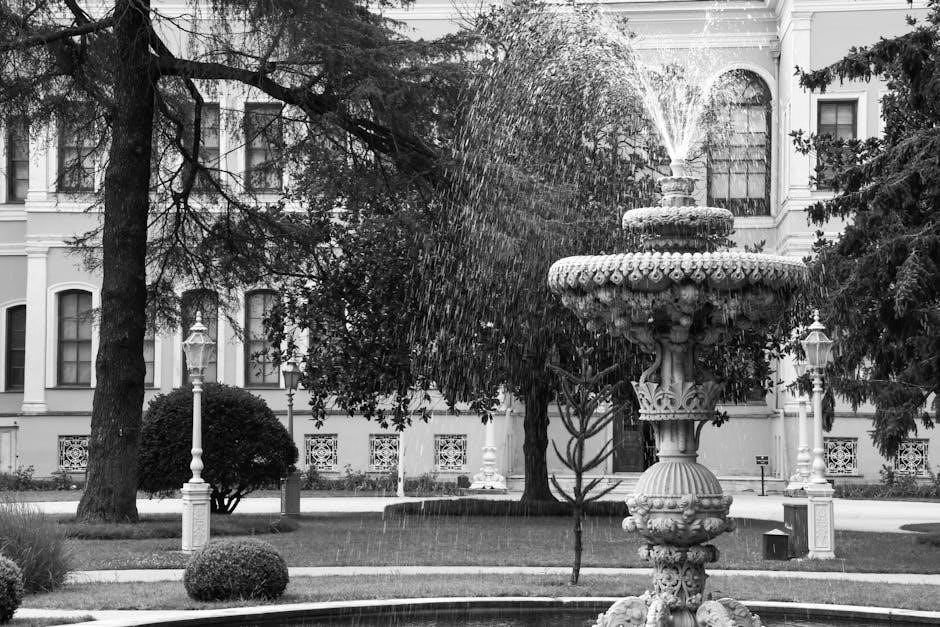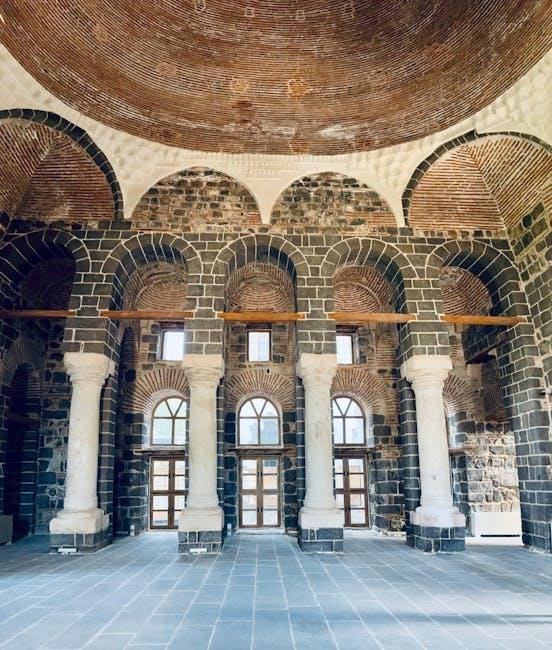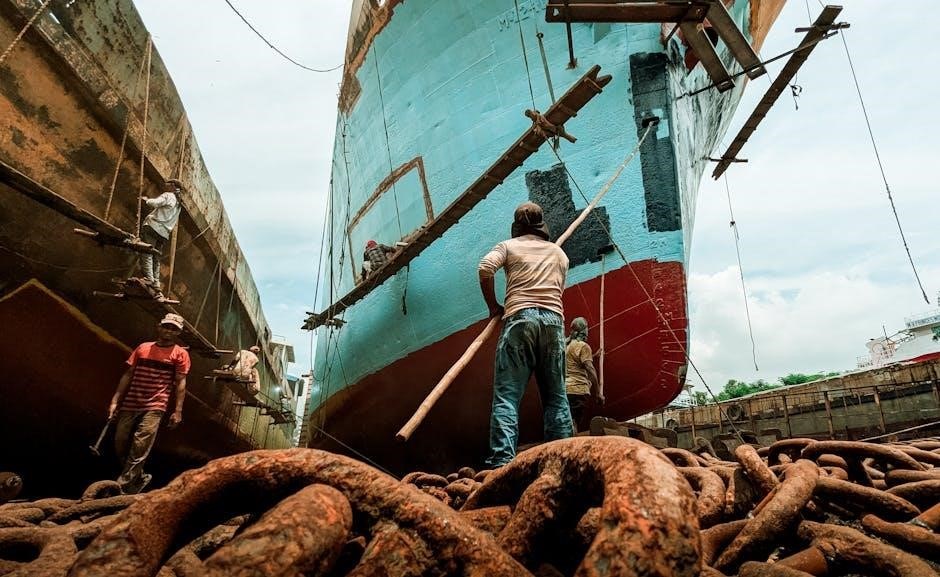Restoration Shaman PvP Guide Overview

This guide provides comprehensive insights into playing a Restoration Shaman in PvP, covering key strengths, optimal builds, rotation strategies, and essential tips for success in battlegrounds and arenas․
Welcome to our Restoration Shaman PvP guide! Shamans are versatile healers with a unique set of abilities that excel in both solo and group PvP scenarios․ Restoration Shamans bring exceptional mobility, strong group utility, and consistent healing output, making them a valuable asset to any team․ Their ability to adapt to dynamic battleground situations and arenas sets them apart from other healers․ This guide is designed to help you master the playstyle of a Restoration Shaman in PvP, covering everything from talent choices to optimal gameplay strategies․ Whether you’re new to PvP or looking to refine your skills, this guide will provide you with the tools and insights needed to excel as a Restoration Shaman in competitive environments․
Key Strengths and Weaknesses
Restoration Shamans excel in PvP due to their exceptional mobility, versatility, and strong group utility․ Their ability to provide consistent, long-range healing makes them highly effective in dynamic battlegrounds and arenas․ Key strengths include access to powerful spells like Healing Rain and Earth Shield, which enhance group survivability․ Additionally, their totems, such as Spirit Link Totem, offer unique utility that can turn the tide of battles․ However, Restoration Shamans have some weaknesses, such as vulnerability to melee attacks and limited single-target healing compared to other healers․ Mana management can also be challenging if not handled properly․ Despite these drawbacks, their adaptability and utility make them a strong choice for PvP environments․
Importance of Talents and Builds
Talents and builds play a crucial role in optimizing a Restoration Shaman’s performance in PvP․ Selecting the right talents enhances healing output, survivability, and mobility․ For instance, choosing Rain Dance improves Healing Rain, reducing mana cost and enabling instant casting․ Similarly, Latent Wisdom boosts the power of ancestral spells, increasing overall healing effectiveness․ PvP-specific talents like Thunderstorm provide crowd control, while Earthgrab Totem helps manage enemy movements․ Builds should focus on balancing healing efficiency with defensive capabilities, ensuring the Shaman can sustain both themselves and their team․ Proper talent selection tailored to specific PvP scenarios, such as arenas or battlegrounds, significantly impacts gameplay success․ A well-optimized build ensures Restoration Shamans remain competitive and effective in dynamic PvP environments․

Talents for Restoration Shaman in PvP
Selecting optimal talents is crucial for Restoration Shamans in PvP, enhancing healing output, survivability, and mobility․ Talents like Rain Dance and Latent Wisdom boost spell effectiveness and mana efficiency, while PvP-specific talents like Thunderstorm provide crowd control, making Shamans formidable healers in competitive environments․
Hero Tree Talent Highlights
Hero Tree talents play a pivotal role in enhancing a Restoration Shaman’s effectiveness in PvP․ Latent Wisdom is a standout choice, increasing the power of ancestral spells by 20%, which significantly boosts healing output․ Routine Communication improves group healing coordination, making it easier to manage multiple targets․ For mobility and utility, Rain Dance is exceptional, as it strengthens Healing Rain, reduces mana cost, and enables instant casting․ Additionally, talents like Thunderstorm provide valuable crowd control, helping to manage enemy players․ These selections synergize to enhance survivability, healing efficiency, and overall PvP performance, ensuring Restoration Shamans remain competitive in dynamic battleground and arena scenarios․ Proper talent allocation in the Hero Tree is essential for maximizing impact and adapting to various combat situations․
Class Talent Choices
Class talents are foundational to a Restoration Shaman’s PvP success, offering abilities that enhance healing, mobility, and survivability․ Riptide is a cornerstone, providing instant healing and reducing the cooldown of Healing Wave․ Tidal Waves is another key talent, empowering Healing Surge and Chain Heal with increased effectiveness․ Healing Stream Totem is invaluable, offering passive group healing and synergy with other totems․ Earth Shield is a defensive staple, absorbing damage and preventing fatal blows․ For mobility, Ghost Wolf allows rapid repositioning, while Thunderstorm provides crowd control and distancing․ These talents form the backbone of a Shaman’s toolkit, enabling adaptability in high-pressure PvP scenarios․ Proper talent selection ensures a balance between healing output, survivability, and utility, making Restoration Shamans versatile healers in competitive environments․
PvP-Specific Talents
PvP-specific talents for Restoration Shamans are designed to enhance survivability, control, and healing output in competitive environments․ Rain Dance is a standout choice, reducing the mana cost of Healing Rain while also making it instant-cast․ Earthgrab Totem is another key talent, providing exceptional crowd control by rooting enemies in place․ Spirit Link Totem is highly valuable, as it redistributes damage taken among party members, enhancing group survivability․ Ancestral Vision is also notable, allowing the Shaman to anticipate incoming attacks and reduce cooldowns on defensive abilities․ Additionally, Purifying Waters offers a unique dispel mechanic combined with healing, making it a versatile choice․ These talents collectively empower the Restoration Shaman to excel in PvP by balancing offensive disruption with defensive fortification․
Racial Bonuses and Their Impact

Racial bonuses significantly influence a Restoration Shaman’s effectiveness in PvP․ Horde races, such as Tauren, Orcs, and Trolls, offer unique benefits․ Tauren gain Berserk, increasing spell casting speed by 20% under pressure․ Orcs benefit from Command, boosting pet damage and health, while Trolls utilize Berserking, enhancing casting speed and mana regeneration․ On the Alliance side, Draenei provide Gift of the Naaru, a healing bonus, and Shadow Resistance, which counters enemy debuffs․ Night Elves gain Quickness, improving dodge chance, and Worgen use Aberration for enhanced resistance․ Each race offers distinct advantages, allowing players to tailor their Shaman to suit their PvP playstyle․ These bonuses can be pivotal in competitive scenarios, making race selection a critical decision for Restoration Shamans aiming to dominate in battlegrounds and arenas․
Rotation and Gameplay
Restoration Shamans excel in PvP through smart healing priority, key spell usage, and cooldown management, ensuring group viability while applying pressure in dynamic battleground and arena scenarios․
Healing Priority System
In PvP, Restoration Shamans must prioritize healing based on team needs, focusing on oneself first to avoid death, then allies in critical situations․ Use Healing Wave for quick, high-value heals and Healing Surge for emergencies․ Keep Riptide on cooldown for consistent, proactive healing․ Always monitor the battlefield to anticipate damage spikes and preemptively apply Healing Stream Totem or Earth Shield on high-value targets․ Use Reincarnation strategically to recover quickly after a death․ Maintain Mana Tide Totem to sustain mana in prolonged fights․ Adapt your priority system dynamically based on the situation, ensuring your team remains viable while countering enemy pressure effectively․ Proactive healing and smart spell usage are key to success in competitive PvP environments․
Key Healing Spells and Their Usage
Restoration Shamans rely on a versatile set of healing spells to sustain their team in PvP․ Healing Wave is a reliable, fast-casting heal for moderate damage, while Healing Surge provides stronger, quicker healing in emergencies․ Riptide is a cornerstone spell, applying a HoT that can be instantly recast on the same target for enhanced healing․ Earth Shield is crucial for preventing damage on high-value allies, absorbing incoming attacks․ Chain Heal excels at multi-target healing, bouncing between allies to restore health efficiently․ Healing Stream Totem and Mana Tide Totem offer sustained healing and mana regeneration, respectively․ Using these spells effectively requires situational awareness and smart positioning to maximize their impact in dynamic PvP environments․ Proper spell usage is vital for maintaining team viability and securing victories․
Managing Cooldowns Effectively
Effectively managing cooldowns is crucial for Restoration Shamans in PvP to maximize healing output and protect the team․ Earth Shield should be maintained on high-value targets to absorb incoming damage, while Riptide should be recast on injured allies to provide consistent HoT healing․ Healing Rain is best used during heavy damage phases to blanket multiple teammates, though its mana cost requires careful timing․ Mana Tide Totem should be deployed during lulls in combat to replenish mana for the healer and their team․ Ghost Wolf can be used to reposition quickly or escape danger, while Berserking (for certain races) enhances casting speed during critical moments․ Cooldowns like Earthliving Weapon and Latent Wisdom amplify healing potency when activated․ Properly timing these abilities ensures sustained healing and adaptability in dynamic PvP scenarios, making cooldown management a cornerstone of success․
Stats and Gear Optimization
Focus on haste, versatility, and mastery for optimal healing output․ Utilize enchants and gems that enhance these stats to improve survivability and efficiency in PvP scenarios․
Stat Priority for Restoration Shaman
For Restoration Shamans, prioritizing stats is crucial for maximizing healing efficiency․ Haste is typically the primary stat, as it increases casting speed and enables quicker healing․ Versatility comes next, providing a balanced boost to healing and damage reduction․ Mastery is also valuable, enhancing the effectiveness of healing spells․ Critical strike can be beneficial but should be prioritized after the aforementioned stats․ Additionally, enchants and gems should focus on amplifying these stats to further improve survivability and healing output․ Proper stat allocation ensures optimal performance in PvP scenarios, allowing for swift reactions and sustained healing pressure․ Always consider current patch changes and meta adjustments when refining your stat priority for the best results in competitive play․
Enchants and Gems for PvP
Optimizing enchants and gems is essential for Restoration Shamans in PvP․ Enchants like Enchant Gloves ⎻ Healing Versatility and Enchant Boots ⎼ Speed enhance mobility and healing efficiency․ For gems, prioritize Versatile Jewel Cluster and Quick Jewel Cluster to boost versatility and haste, respectively․ These choices align with the stat priority, ensuring maximum effectiveness in competitive scenarios․ Enchants and gems should complement your gear, focusing on enhancing healing output, mana efficiency, and survivability․ Properly gemmed and enchanted gear significantly improves your performance, allowing for better burst healing and sustained damage mitigation․ Always adapt your choices based on the current meta and patch to maintain a competitive edge in PvP environments․

Best-in-Slot Gear Recommendations
Acquiring the best-in-slot (BiS) gear is crucial for maximizing your Restoration Shaman’s potential in PvP․ Focus on items with high versatility and haste, as these stats enhance healing output and mana efficiency․ For Season 3 of The War Within, prioritize pieces like the Chest of the Titanic from Neltharion and Shoulders of the Earthshaper from Al’ar․ Gloves such as Gauntlets of the Ancient provide excellent haste, while trinkets like Badge of the Swarmguard offer adaptive versatility․ Craftable items, such as Earthforge Leggings, are also highly valued for their balanced stats․ Ensure all gear is socketed with Quick Jewel Cluster or Versatile Jewel Cluster to further optimize performance․ Regularly check top players’ builds and patch notes for updates to maintain a competitive edge in PvP․
Macros and Addons
Enhance your PvP gameplay with essential macros and addons․ Use healing automation macros for efficient cooldown management․ Must-have addons include HealBot and Deadly Boss Mods for optimal performance․
Essential Macros for PvP

Macros are crucial for optimizing your Restoration Shaman’s PvP performance․ Create a Healing Wave macro to cast on yourself or a target instantly․ Use a Healing Rain and Chain Heal combo macro to maximize group healing․ A Spiritwalker’s Grace macro allows instant mobility while casting․ Combine Earth Shield and Healing Wave to maintain shields while healing․ A Mana Tide Totem macro with a cooldown announcer helps manage group resources․ These macros enhance efficiency, reduce casting time, and improve multitasking in intense PvP scenarios․ By streamlining your abilities, you can focus on strategic decisions and adapt to dynamic combat situations․ Mastering these macros will elevate your healing impact and contribute to your team’s success in battlegrounds and arenas․
Addons to Enhance Gameplay
Addons are essential for enhancing your Restoration Shaman’s PvP performance․ HealBot and VuhDo provide customizable healing interfaces, allowing efficient target selection and spell casting․ Deadly Boss Mods (DBM) offers timers and alerts for battleground objectives and enemy cooldowns․ WeakAuras helps track buffs, debuffs, and cooldowns, such as Mana Tide Totem and Healing Rain, ensuring optimal use․ ElvUI enhances your UI, improving ability management and rotation tracking․ OmniBar monitors enemy cooldowns, enabling better counterplay․ Gladius provides detailed enemy unit frames, aiding in targeting and focus․ These addons collectively improve awareness, efficiency, and decision-making, giving you a competitive edge in PvP․ By integrating them, you can refine your gameplay and contribute more effectively to your team’s success in battlegrounds and arenas․

Battlegrounds and Arenas
Mastering battlegrounds and arenas requires strategic positioning, mobility, and adaptive healing․ Use totems like Healing Stream Totem to sustain allies and Earthbind Totem to control enemies․ In arenas, focus on dispelling harmful effects and burst healing during critical moments․
RBG-Specific Tips and Strategies
In Rated Battlegrounds (RBGs), Restoration Shamans excel at sustaining large groups and controlling enemy movements․ Use Healing Stream Totem to maintain consistent healing and Earthbind Totem to slow enemy flag carriers․ Position yourself near high-priority targets, such as healers and DPS, to maximize your healing impact․ Utilize Ghost Wolf for quick repositioning and Spiritwalker’s Grace to heal while moving․ Focus on spot healing vulnerable players during intense skirmishes and coordinate with your team to protect flag carriers․ In defensive scenarios, anchor your healing with Healing Tide Totem and use Capacitor Totem to disrupt enemy ultimates․ Shamans with the Garrison racial bonus can enhance their team’s defense․ Always adapt your totem placement and healing prioritization based on the dynamic battlefield conditions․
3v3 Arena Strategies
In 3v3 arenas, Restoration Shamans should focus on adaptability and proactive healing․ Prioritize healing your team’s main damage dealer and ensure consistent support for your healer partner; Use Healing Rain during team fights to sustain multiple allies at once, and rely on Earthfury for burst healing․ Position yourself to maximize the range of Healing Stream Totem and Cloudburst Totem․ Utilize Thunderstorm to create distance from melee attackers and Earthbind Totem to control enemy movement․ During defensive periods, activate Earth Shield on yourself or a teammate and use Shamanistic Rage to reduce damage taken․ Manage your mana carefully, as prolonged fights require consistent healing․ Coordinate with your team to set up kills and disrupt enemy healers, ensuring your team maintains control of the battlefield․

Pros and Cons of Restoration Shaman
Restoration Shamans excel in mobility, totem utility, and group healing but struggle with mana management and vulnerability to focus fire in competitive PvP scenarios․
Strengths in PvP Scenarios
Restoration Shamans bring exceptional mobility and versatility to PvP, excelling at both single-target and group healing․ Their totems provide consistent support, while spells like Healing Rain and Chain Heal ensure sustained group healing․ Mobility tools such as Ghost Wolf and Spirit Walk allow for quick positioning and escaping․ Totems like Healing Stream Totem and Earthen Wall Totem offer additional survivability and utility․ Their ability to adapt to dynamic situations makes them valuable in both offensive and defensive roles․
- Strong group healing capabilities․
- Excellent mobility for positioning and escaping․
- Totems provide consistent, passive support․
These strengths make Restoration Shamans a versatile and valuable asset in PvP scenarios․
Weaknesses and How to Mitigate Them
Restoration Shamans face challenges such as vulnerability to interrupts, limited burst healing, and reliance on totems, which can be destroyed․ Additionally, their mana management can be tricky in prolonged fights․ To mitigate these, use Totemic Persistence to keep totems active during stuns and Mana Tide Totem to restore mana․ Prioritize healing efficiency by using Healing Stream Totem and Chain Heal on grouped allies․ Improve survivability with Earth Shield and Stone Bulwark Totem․ Enhance mobility with Ghost Wolf and Spirit Walk to avoid dangerous positions․ Finally, adapt your rotation to conserve mana while maintaining consistent healing output․
- Vulnerability to interrupts and mana issues․
- Reliance on totems that can be destroyed․
Addressing these weaknesses ensures a more effective and resilient Restoration Shaman in PvP․

Resources and Further Reading
Explore detailed guides, videos, and forums for advanced strategies․ Check Egregious Shaman Guide and Icy Veins for in-depth insights․
- Official WoW Forums for community discussions․
- YouTube Channels like Kakeiso for PvP tips․
These resources provide comprehensive coverage of Restoration Shaman PvP optimization and strategies․
Recommended Guides and Videos
- Egregious Shaman Guide: A comprehensive resource on Classic WoW’s Restoration Shaman, offering deep insights into talents, rotations, and gameplay․
- Kakeiso’s PvP Tips: A video series focusing on Level 85 Restoration Shaman strategies, perfect for optimizing healing in competitive environments․
- Brainq’s 3․3․5 Guide: Detailed instructions for mastering Restoration Shaman in Wrath of the Lich King, including optimal builds and spell usage․
- Icy Veins TBC Guide: Covers Burning Crusade Classic, offering tailored advice for PvP success, including gear and racial bonuses․
- Mists of Pandaria Guide: Explores Restoration Shaman specifics in MoP, with a focus on glyphs, macros, and professions for PvP dominance․
- The War Within Season 3 Guide: Provides up-to-date builds and strategies for Restoration Shaman in modern WoW PvP, based on live data․
These resources ensure a well-rounded understanding of Restoration Shaman PvP mechanics and optimization․

Community Discussions and Forums
Engaging with the Restoration Shaman community is essential for staying updated and refining your gameplay․ Popular forums like the official WoW forums and Reddit’s r/Shaman and r/WoW are hubs for discussing builds, strategies, and real-time feedback․ Additionally, Discord servers dedicated to Shaman play host expert discussions and resource sharing․ Websites like Icy Veins and Twitch streams from top players provide live insights and Q&A sessions․ These platforms are invaluable for learning from experienced players, troubleshooting issues, and adapting to meta shifts․ Active participation in these communities ensures you stay informed and improve consistently in the dynamic world of PvP․

